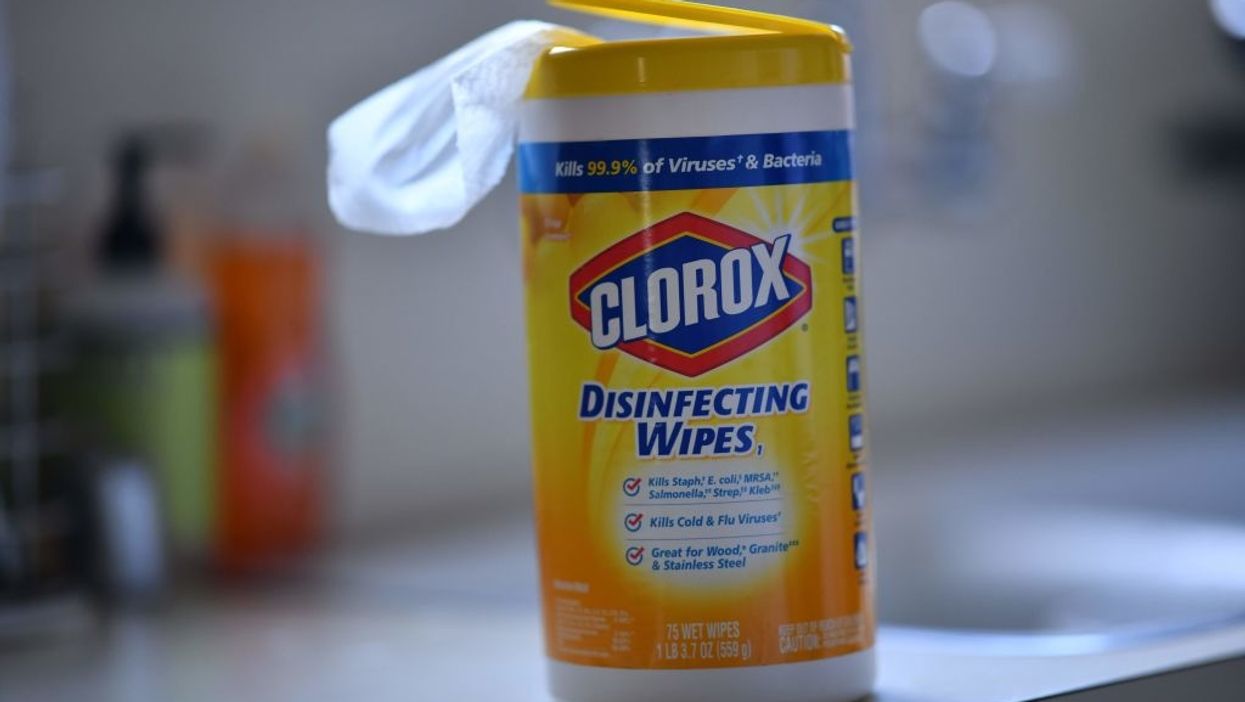
Photo by CHRIS DELMAS/AFP via Getty Images

Not the main way it spreads
The Centers for Disease Control and Prevention has updated its guidance on COVID-19 to say that the disease "does not spread easily" on contaminated surfaces.
The disease has always been thought to spread mainly through person-to-person contact by respiratory droplets produced when an infected person coughs, sneezes, or talks. But up until recently, the CDC maintained that the virus could also spread through contact with contaminated surfaces.
Now the CDC says "the virus spreads easily between people" but "does not spread easily in other ways." Under the second section, the guidance reads: "It may be possible for COVID-19 to spread in other ways, but these are not thought to be the main ways the virus spreads."
According to Yahoo News, the guidance used to simply say that spread in other ways "may be possible," without the added disclaimer. This is, of course, a subtle change, but still one of interest.
Much of the thinking on the virus' spread through contaminated surfaces stemmed from a New England Journal of Medicine study in March that found the virus could survive in the air for hours and on certain surfaces for days. In the study, the virus was detected up to four hours later on copper, up to one day later on cardboard, and up to three days later on plastic and stainless steel.
Though the study never purported to say that people who touched those surfaces could become infected, guidance on the matter advised caution.
In April, when the Food and Drug Administration announced that customers don't need to worry about contracting the virus from grocery packaging, CDC guidance expressed caution, citing the study.
It should be noted that the World Health Organization has not updated its guidance on contaminated surfaces and still states that "COVID-19 spreads primarily from person to person," but "can also spread if you touch contaminated objects and surfaces."
The Yahoo News report notes that the reason for the change is not due to any new study on the virus' viability on surfaces, but rather epidemiological data has simply found that person-to-person contact is the main highway for transmission.
"Based on the epidemiology, we know that the main way this virus is infecting people is from direct contact with other infected people," said Dr. Amesh Adalja, a senior scholar at the Johns Hopkins Center for Health Security. "Contaminated surfaces play some role, but it's likely much smaller."
"This is a respiratory virus, and respiratory viruses largely spread through breathing in infected respiratory droplets," he added.
It's worth noting that the updated guidance does not necessarily mean people should be less cautious about touching surfaces on which the virus may be present.
Dr. Richard Watkins, an infectious disease physician at Northeast Ohio Medical University, told Yahoo News that "we are still learning about this new coronavirus — including how it spreads."
"It might be possible to become infected after touching a surface that has the virus, then touching one's face," Watkins added. "That is why handwashing and avoiding touching one's face are important. However, this isn't the main way the virus is spread."